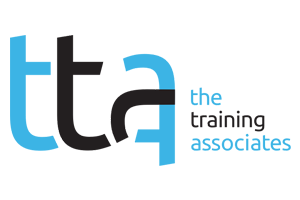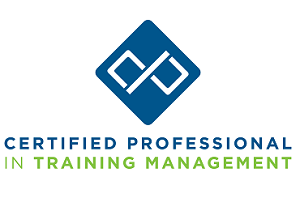Growing up, I spent a lot of time at my grandmother’s house playing with my uncle. A little more than a year older than me, my uncle Pat is adopted and autistic. I knew both of these things in the way that children know that money is what you need to buy groceries or that limits on how much pizza you can eat only makes you want it more. These facts of his life were on the periphery of my awareness, but they were not as important to me as the bigger problem we always needed to solve: Where to play so that my other uncle, his brother Chris (who is also adopted and autistic) wouldn’t charge through the world of toys we built that day.
Using only my dolls and his cars, we’d create elaborate universes in doll houses, along his car rug, on the precipices of the front staircase, anywhere that could sustain the world we dove into. We’re older now, but I still spend a lot of my time thinking about this problem Pat and I would solve almost daily: Where can we play?
As a learning professional, collaborative play is a central tenet of my practice. If I can create a space for adult learners to take the same risks they did as children in order to develop a new skill or understand a new concept, it’s been a good day. For me, learning and development (L&D)’s role in the employee experience is to curate opportunities for collaborative play that, in time, foster a sense of belonging.
More than just today’s biggest buzz word in the diversity, equity and inclusion (DEI) space, belonging describes an important and very human need to be acknowledged as a member in the group. Traditionally, L&D has helped companies create this sense of belonging for employees by conducting leadership training that instructs folks at the top in areas such as providing timely and relevant feedback, recognizing their implicit bias and earning the trust of your team. By focusing on what leaders individually can do to create an inclusive team, I argue, we miss an opportunity for teams to co-create the environment in which they not only want to work, but also feel like the people on their team want them there. In short, that they belong. L&D can assist by curating learning experiences that focus on teams solving a problem together — perhaps even one they’re actually struggling with — and providing just-in-time training on the interpersonal, systems thinking, and innovation skills required to do so effectively.
To be clear, I am not saying we should stop training leaders on how to create psychologically safe and inclusive spaces. What I am saying is that we need to stop training them in isolation from the people they’re leading if we want to create cohesive teams that have all the characteristics needed for success in today’s business environment. Perhaps even more important an outcome, though, will be the feeling of connectedness that results from successfully solving a problem together.
Your Learners Want To Know: What’s Next?
When I started in my current role, one of my first questions to staff was what they did and did not like about past trainings. The top complaint staff had was that they never walked away with an understanding of what to do next. In anecdote after anecdote and post-training evaluation after evaluation, staff reported feeling confused, frustrated and in some cases grateful — but anxious — because they were not given an opportunity nor a roadmap for how to apply what they had just learned. This was especially pronounced for some of the DEI trainings.
As the person now responsible for managing our DEI training program (which for us is called racial equity training) and our supervisor training program, I can see where the areas of opportunity are for L&D to help cultivate organizational belonging and how they overlap across these two core learning areas. Now, one of the main pieces of feedback I receive — from supervisors and staff alike — is that the supervisor doesn’t know how to help take the DEI content and carry on the work with their teams after the training ends. It is at this interdisciplinary intersection of supervisor skills and training in areas like racial equity where the opportunity to engage whole teams exists.
Harnessing this opportunity, I’ve learned, requires four elements for the learning initiative to be effective.
1. Training for supervisors on expectations and a toolkit with steps for what to do after training is completed.
Supervisors are not trainers, and the majority are still developing their coaching skills. One way we can support them in becoming the coaches we know they can be is by hosting a session on expectations for supervisors at the launch of the training initiative. The second way we can support them is by providing a toolkit with a roadmap of what to do, share, and/or say with their whole team and during one-on-ones to foster meaningful follow up and repetition that reinforces the learned content. This is especially important for organizations that have neither the technological infrastructure nor L&D staff to carry out ongoing opportunities for microtraining. By giving supervisors the resources and expectations to connect the training content to the work and to their team culture, we provide the much-needed clarity they need and the organizational buy-in we need for the initiative to be successful.
2. Organizational relevance built explicitly into the training materials.
As I work for a community-based nonprofit, I prioritize working with trainers, content designers and businesses who are local, minority and/or women owned, and in some instances, are just starting their business journey. Aside from ensuring the organization is investing in our local business community, this also allows me to work very closely with them on content development. I regularly provide examples that come from the real work our staff does to be used in the training so that the relevance is explicit. Customization must mean more than branding. It should also include embedding the work staff do every day directly into the content.
3. A team-based problem-solving activity with strict guidelines.
Too often, I see trainings that incorporate discussion or role play activities that don’t provide enough direction. Sometimes, this can be a wonderful way to give learners the freedom to ask hard questions and talk through complex ideas. Providing strict guidelines, such as a nearly impossible time limit, prohibiting certain tools or strategies, or assigning specific bits of information to only some participants but not all, not only mimic the real work conditions we often operate in. Such guidelines also force participants to communicate, get creative and follow through on their commitments. While we may think we provide these kinds of activities in our trainings already, we can be more intentional with their frequency and design.
4. A guided reflection that provides an opportunity for the participants to identify what they learned about the content and about their connection as team members.
Of course, the goal of training is to provide staff with the knowledge and skills needed to carry out their responsibilities. I also firmly believe another goal is to reinforce the strength of the community surrounding each staff member supporting them in doing so. While the supervisor toolkit will include materials for team reflection during their next meeting, the training space also needs to focus on the social-emotional learning happening simultaneously. This means the reflection activity should focus on skills that work in service of strengthening the team community, as well as on areas of growth for team members. For instance, did someone realize they need additional support with learning office-appropriate ways to regulate their emotions? When we help learners tie social-emotional skills to being better team members, we make explicit the tools of effective collaboration and teamwork. Perhaps most importantly, we underscore the role of social-emotional skills in cultivating a sense of belonging for all team members.
I realize that some of these suggestions sound like they run counter to what we know about the effectiveness of microtraining. I would argue, though, that this approach embraces microtraining by helping leaders embed learning in their team culture. Moreover, it creates a system of accountability that is essential to fostering a culture of belonging. L&D professionals can help stimulate this by providing the resources and learning experiences for achieving the perhaps most nebulous learning outcome of them all: the feeling that you belong.



